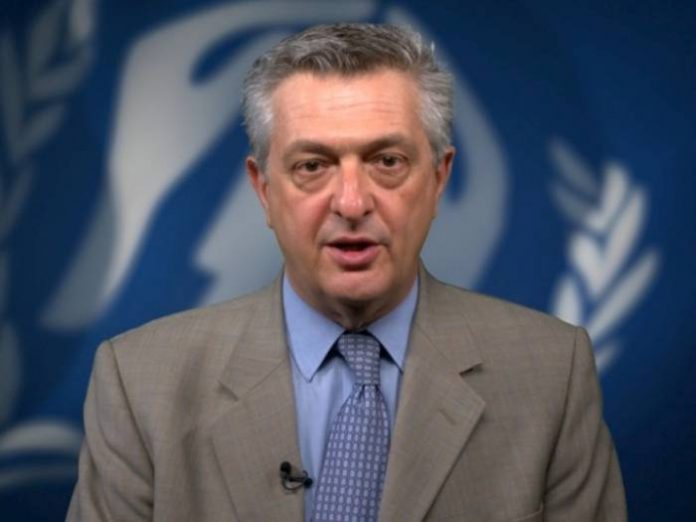The UN High Commissioner for Refugee (UNHCR), Filippo Grandi, has given a cautious welcome to the decision by several EU countries to take in some 450 migrants who have been stranded at Mediterranean Sea for days.
The UN refugee agency chief, however, warned that a “ship-by-ship” arrangement was not sustainable, according to the News Agency of Nigeria, NAN.
The development came after the Governments of France, Germany, Italy, Malta, Spain and Portugal ended a disembarkation stand-off involving the migrants, who had set out from the Libya coast, by agreeing to take them in and process any asylum claims.
Grandi’s comments followed the rescue of the migrants near the Italian coast, where they were reportedly picked up by two ships – one operated by EU border agency Frontex, the other by Italian police.
The UNHCR chief noted that at an EU Summit in June, some Member States had agreed to a more collaborative and well-managed approach to dealing with people rescued at sea.
He also underlined that while States “have obligations to save lives” under international law, those rescued at sea did not have “the unfettered right” to choose their final destination.
“We hope that these arrangements will now be quickly and effectively implemented as well as ending an ordeal for these individuals.
“This sets a positive example of how.countries can uphold sea rescue and manage borders while simultaneously meeting international asylum obligations,” he said.
He noted that solutions were needed that go beyond “piecemeal or ship-by-ship arrangements”, warning that “lives will be at risk with each new attempted boat journey”.
Grandi cautioned that EU arrangements for managing the rescue, disembarkation and follow-up processing of migrants were far from adequate.
Too little is being done to address the desperation that drives people to flee by sea in dangerous boats, just as these migrants had done, the UN migration chief insisted.
Since the beginning of 2018, 50,872 migrants and refugees have entered Europe by crossing the Mediterranean Sea, the UN migration agency said.
This compares to 109,746 at the same point in 2017, and 241,859 by the middle of 2016, according to the International Organisation for Migration (IOM).
Although slightly fewer people now risk their lives travelling from North Africa to Italy than to Spain, it remains the region’s deadliest sea route, with 1,104 deaths to date this year.
This is almost four times the number of drownings as the Spanish route has registered since Jan. 1, 2018, in spite of having almost similar arrival totals, at around 18,000. (NAN)





